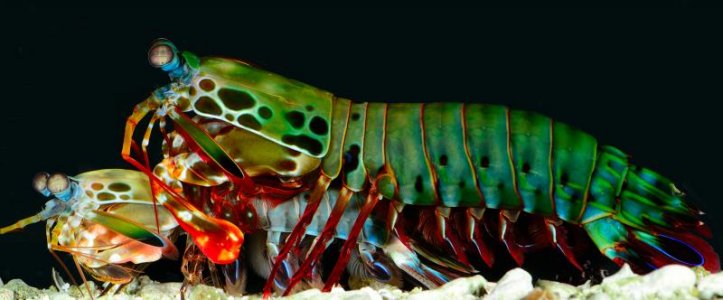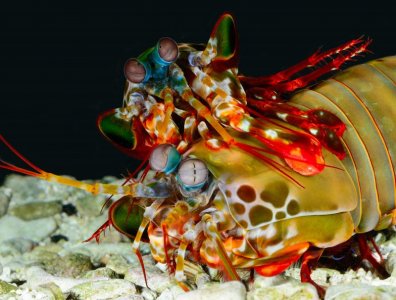Gonodactylus
Premium Member
I've been looking at how size effects mating success in stomatopods. These photos are instructive. Both matings involve the same 12 cm male who is sexually mature, but does not yet show all of his secondary sexual traits. (Uropod spines are not polarized.) In the first image he is mating with a 9 cm female. She is just becoming sexually mature, but has not yet developed ovaries or cement glands. She had never encountered a male. As soon as the male seized and mounted her and started courtship scratching, she settled down, exhibited some courtship and eventually mated. The second image shows sperm cords in both of her gonopores indicating that the copulation was successful.
The third image shows a very large 16 cm female mating with the same male. She showed no aggression and mated seconds after the male grasped her.
In most gonodactylids that I have studied, mating success depends to at least some extent on the male and female being size matched. This seems to be less the case in O. scyllarus.
Roy
The third image shows a very large 16 cm female mating with the same male. She showed no aggression and mated seconds after the male grasped her.
In most gonodactylids that I have studied, mating success depends to at least some extent on the male and female being size matched. This seems to be less the case in O. scyllarus.
Roy



